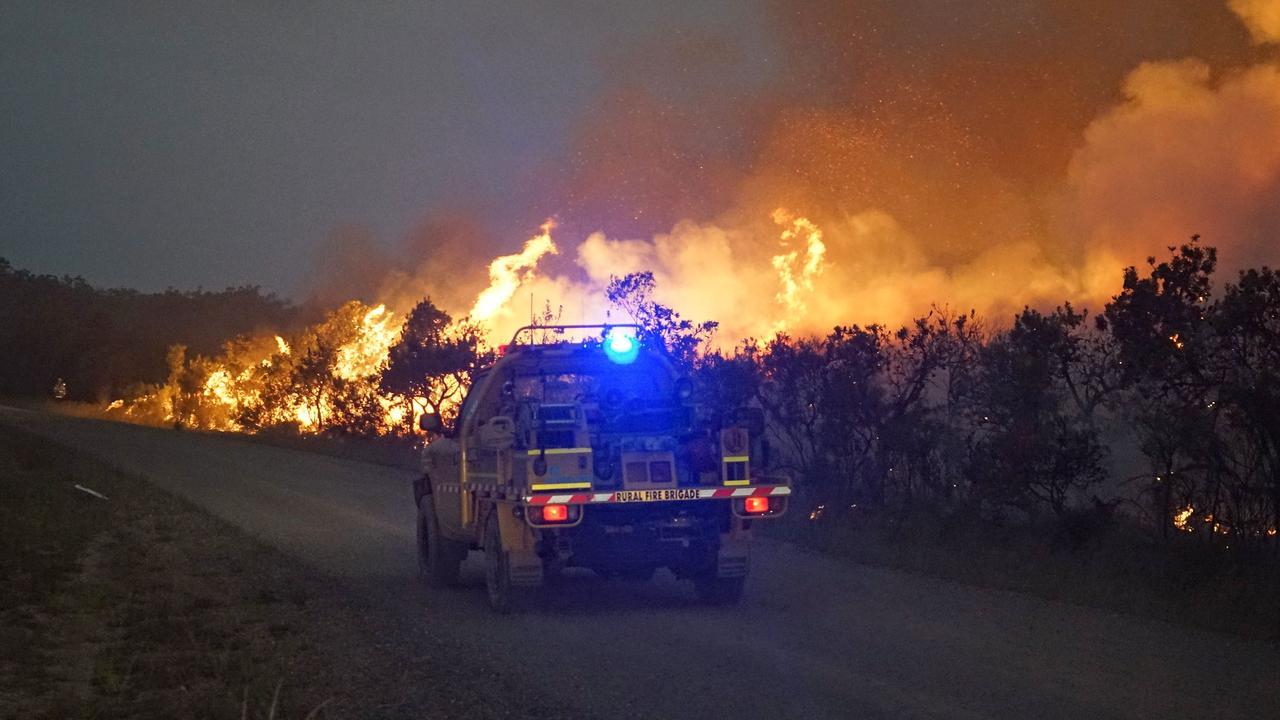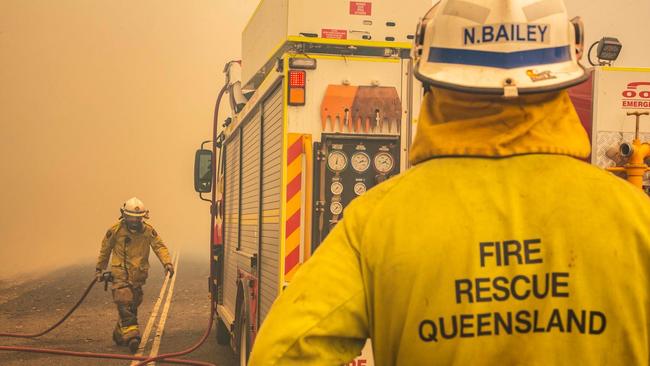Bushfire threat: Southeast Qld could be next after record heat
Record heat and the baking dry have set southeast Queensland up for the perfect firestorm this summer, according to analysis by Australia’s top bushfire experts.
QLD News
Don't miss out on the headlines from QLD News. Followed categories will be added to My News.
RECORD heat and the baking dry have set southeast Queensland up for the perfect firestorm this summer, according to analysis by Australia’s top bushfire experts.
While central Queensland – Rockhampton, Agnes Water and surrounds – has been the focus of the fire battle this week, the southeast could be next.
Hotter-than-normal summer ahead
Two months ago, the Bushfire Co-operative Research Centre identified the pocket in central Queensland as being at the highest risk of bushfire in the state.
But the same map, updated just days ago and combining information from the fire service, the Bureau of Meteorology and other disaster experts, shows southeast Queensland in the firing line, along with a massive swath of coastal New South Wales.
The experts say the hot and dry April to November – the ninth driest and fourth hottest on record – have set up tinderbox conditions. And a looming El Nino, which produces dry conditions, could make matters worse.
It means that for firefighters battling to save communities across Queensland, there is little hope the flames will go out any time soon.
Even if homes are saved, examples from the Sunshine Coast this week have shown the havoc smoke and haze can cause, with gridlock for commuters as police and firefighters had no choice but to close roads to contain the flames.
Bushfire centre chief executive Richard Thornton said the southeast could be in for a “catastrophic” summer.
“We would have expected Queensland’s fire season to have well and truly died down by now.
“This is highly unusual, and probably unprecedented, in Queensland,” Dr Thornton said.
“In these types of events, firefighters will need to focus on protecting houses and sheds and people.”
He said more people were living in green and bush areas than ever, fuelling the need for bushfire plans.
“In these conditions, it’s not the firefighters who are going to put the fires out, it’s going to be a change in the weather.
“With the right weather conditions it could be catastrophic.
“With Queensland currently experiencing severe bushfires in several locations, above normal fire potential is expected to continue until substantial rainfall is received.”
But hitting even average rainfall is less than a 50 per cent chance, according to the report.

And the El Nino is rated a 70 per cent chance of forming, triple the normal chance.
The El Nino brings a higher fire risk, a greater chance of heatwaves, and fewer tropical cyclones and soaking rains that could offer a bushfire reprieve.
Even the rain in the past two months has not been enough to take the edge off the fire threat.
“This rain has not been sufficient to remove the large negative rainfall anomalies that accumulated earlier in the year; it will take a number of months of above-average rainfall to remove the deficiencies, meaning that general landscape dryness is likely to persist for many areas for some months.
“Temperatures in Australia for the year to date have been very much warmer than average, with 2018 likely to finish amongst Australia’s 10 warmest years on record.”
Queensland Fire and Emergency Services have reinstated a total fire ban until just before midnight tonight for residents of the Ipswich, Somerset, Lockyer, Logan, Scenic Rim and Gold Coast local government areas.



